Despite being one of the most remote places on Earth, the glaciers of South Georgia Island are home to an abundance of life.
Biodiversity researcher Dr Anne D Jungblut has been finding out exactly how many species these vast ice masses support.

King penguins gather next to the Heaney Glacier © Dr Anne D Jungblut
Despite being one of the most remote places on Earth, the glaciers of South Georgia Island are home to an abundance of life.
Biodiversity researcher Dr Anne D Jungblut has been finding out exactly how many species these vast ice masses support.
South Georgia Island is an icy outpost in the South Atlantic Ocean that can only be reached by boat.
It is not permanently inhabited, and travelling there from London takes at least a week, by plane and boat. About half of the island is covered in ice and, until recently, it was thought that glaciers were sterile systems that supported no life.
Research has now shown that in reality, glaciers are home to as much biodiversity as temperate soils, therefore a biome in their own right. They also represent Earth's largest freshwater habitats.
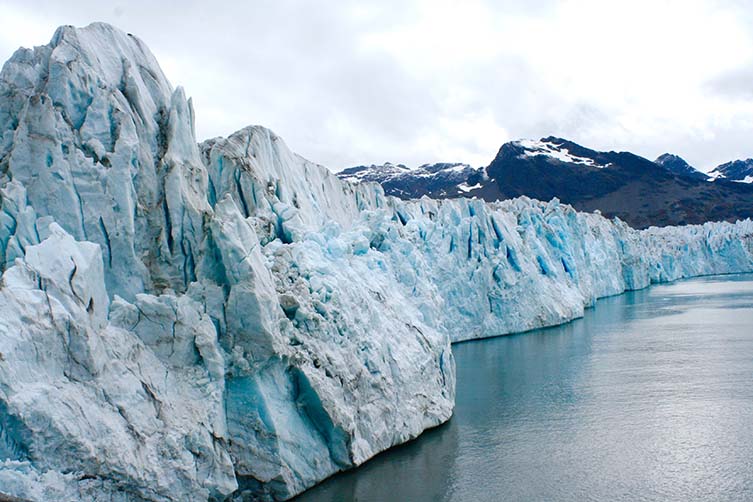
Nordenskjöld Glacier on South Georgia's Barff Peninsula © Dr Anne D Jungblut
Anne was awarded a National Geographic Society research grant to study the glaciers of South Georgia, along with collaborators Dr Arwyn Edwards and Dr Tristram Irvine-Fynn from Aberystwyth University and Dr David Pearce from Northumbria University.
They conducted the first-ever study on the diversity of microbes that are thriving in the glaciers.
In the summer months, glaciers are extreme environments with permanently low temperatures, little growth and limited nutrients. Because of this, most of the life there is microbial, plus some microscopic animals like tardigrades.
South Georgia is also in what is called the polar transition zone, meaning its ecosystems are likely to change with the climate. An increase of only a few degrees will push the annual temperatures above zero degrees. This means it is vital to understand what organisms live there, before the landscape changes.
Anne says, 'Climate change could lead to more ecosystem decline and potentially loss of biodiversity. It is already known that many glaciers on South Georgia are retreating and thinning, and this is directly tied to the prevailing climate, highlighting the region's sensitivity.'
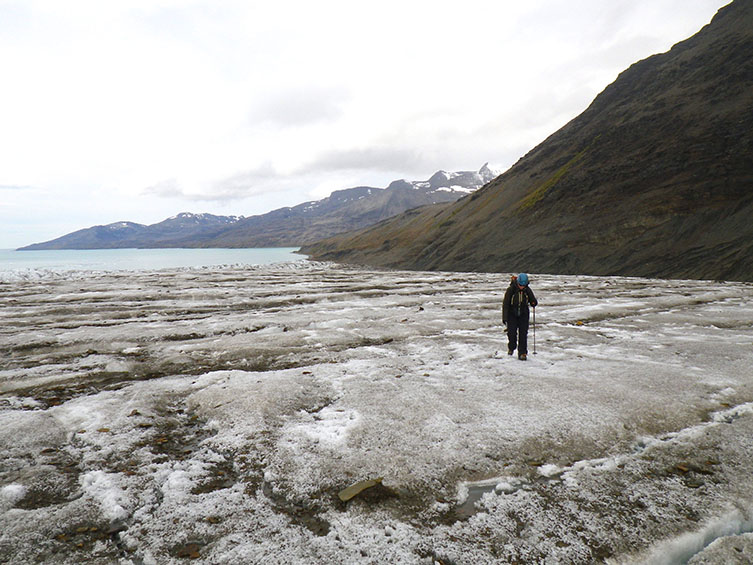
Anne explores the island
South Georgia Island is about 135 kilometres long, and although it is only 35 kilometres wide, the highest mountain is 2,935 metres high.
There are 11 mountains reaching higher than 2,000 metres, and the landscape is characterised by more than 160 glaciers.
The climate is classified as polar but average winter temperatures are usually only around -5°C, with a summer average temperature of 8°C.
To get to the island, you must cross the South Atlantic by boat from South America, which can take between three and five days. Anne has made the crossing several times.
Anne says, 'These journeys are very enjoyable, with the days filled exploring the ship, finishing up some last-minute data analysis or paper writing, and watching whales and albatrosses on the bridge. This is also a welcome time to catch my breath after a usually hectic time of packing for the field work prior to departure and busy schedule to come.
'Once we arrive on South Georgia Island, things get busy very quickly. We usually start with meetings to discuss our planned field programme, requirements for lab space and boating.'
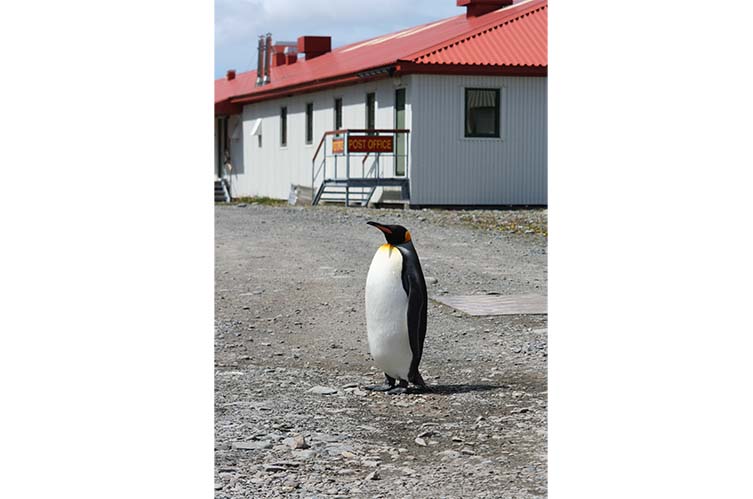
A curious penguin pays a visit to South Georgia Island's Post Office © Dr Anne D Jungblut
For the National Geographic-funded project, the main research sites were Nordenskjöld Glacier on Barff Peninsula and Heaney Glacier on St Andrews Bay. The team had to be transferred by boat to these bays and set up camp for a few days.
Anne says, 'While we were camping, a usual day started with a hearty breakfast of porridge and tea and coffee, followed by preparing some packed lunches - my favourite field lunches are chocolate and dried fruit and nuts.
'We also needed to get all the sampling equipment and containers ready for the day's work. Afterwards, it was at least an hour hike to our sampling sites with all the equipment and safety gear strapped on our backs, passing many fur seals on the beaches.
'We could only carry out work in good weather conditions - without rain or snow, and not too much wind. Once there, we scouted potential sampling sites and collected water and sediments for the DNA analysis. We also measured environmental variables such as salinity and pH and record the GPS coordinates.'
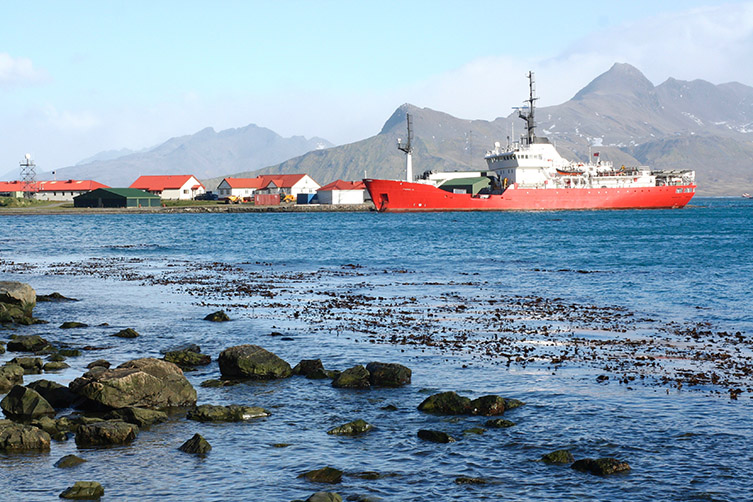
The station where some scientists are based when they arrive on the island © Dr Anne D Jungblut
Plant seeds, pollen and spores can accumulate on glaciers, so the team also looked for these on the glaciers' surface to test whether they could germinate any plants in the lab.
The way back to the camp usually took longer after a day out on the glacier, with the team carrying lots of new samples. Once they were back at base camp, dinner was a one-pot meal followed by lots of hot drinks. The lack of artificial light in the huts meant the team were in bed early.
Anne says, 'The island never goes completely to sleep though. There were always sounds coming from the seal colonies around us. It also provides ample opportunities for stargazing, as the Milky Way can be clearly seen in the absence of any light pollution.'
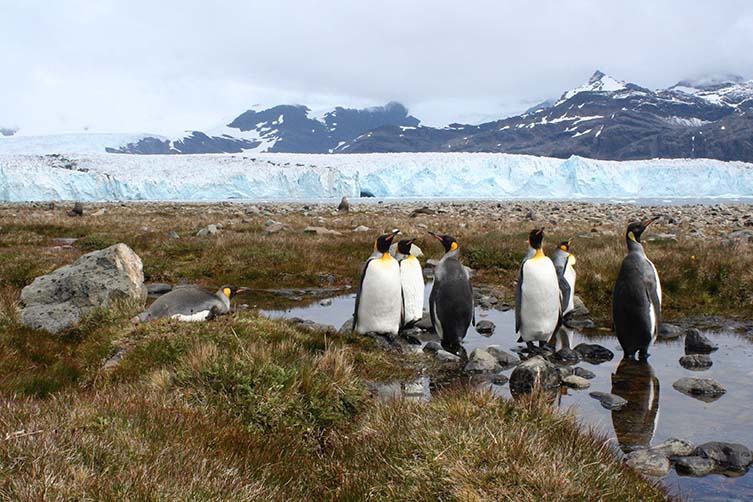
Six species of penguin live all over the island. These are King penguins, one of the larger species © Dr Anne D Jungblut
Life on South Georgia Island is not just about microbes. During summer, the beaches are covered in elephant and fur seals.
There are also at least 48 bird species, many of which are threatened or endangered. The island is particularly well known for its penguins and albatross populations.
On South Georgia there are six species of penguin, including gentoo, chinstrap, macaroni and king penguins. In fact, St Andrews Bay and Salisbury Plains have some of the biggest king penguin colonies in the world.
Anne says, 'There are also at least four albatross species, including the mighty wandering albatross with a wingspan of up to 3.5 metres. For me personally, the most beautiful bird is the light-mantled sooty albatross, which is threatened and only rarely seen breeding, hidden on the steep cliffs of the island.'
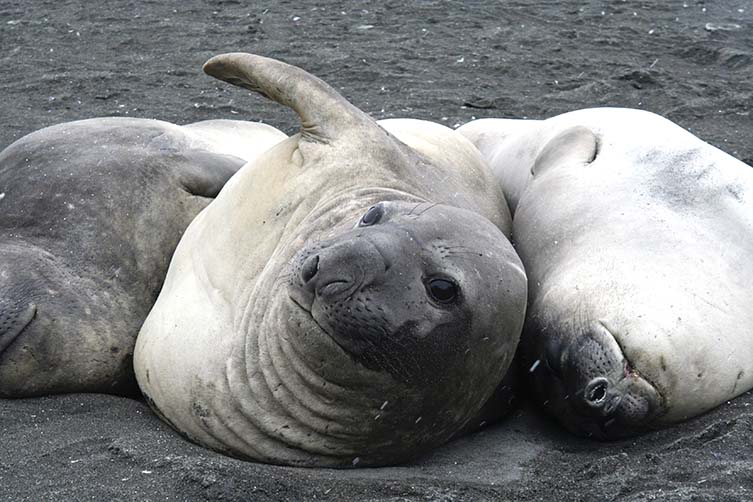
Elephant seals relax on the beach © Dr Anne D Jungblut
Documenting the microbiology and plant life on South Georgia's glaciers is still in the early stages, and the analysis of the DNA sequences is ongoing.
The results to date have been promising. Anne's team found several microbial communities in all of the glacier meltwater, ranging from cyanobacteria, (photosynthetic, oxygen-producing bacteria) to small organisms that recycle carbon.
The data also suggests that two of the studied glaciers host distinct communities. Further research is needed to find out whether the organisms on the glaciers are different because of varied environmental conditions on the glacier.
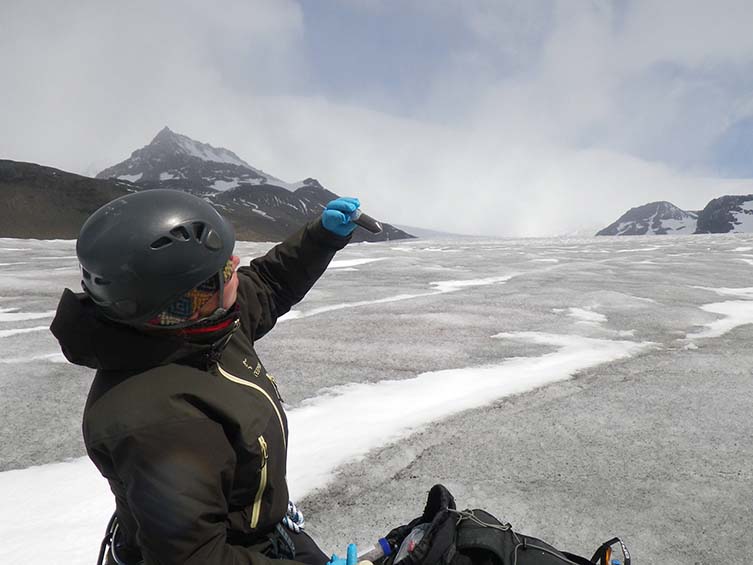
During fieldwork trips, Anne spends her days taking samples from glaciers and meltwater
Anne says, 'We have also been able to show that plant propagules are indeed trapped in sediment of surface ice meltwater ponds on South Georgia's glaciers.
'Together with two students at the Museum, we have been able to grow a moss from one of the glaciers in the lab. We don't know how long moss material has been frozen in the ice, but the fact it was there has implications for the biogeography of plant material’.
'It also affects the way we think of the role of glaciers in providing material to inoculate recently deglaciated land or even for maintaining biodiversity trapped in the ice and sediment.'
Anne hopes to contribute to the bank of scientific knowledge about exactly what lives in and on the area's glaciers. This will allow future scientists to learn even more about the biodiversity of glaciers all over the world.
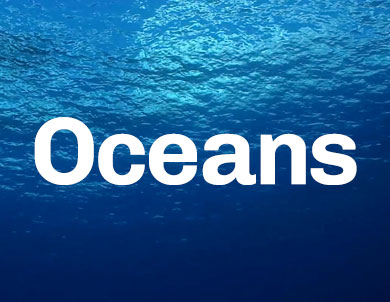
Find out more about scientists working in marine environments at the Museum.
Don't miss a thing
Receive email updates about our news, science, exhibitions, events, products, services and fundraising activities. We may occasionally include third-party content from our corporate partners and other museums. We will not share your personal details with these third parties. You must be over the age of 13. Privacy notice.
Follow us on social media